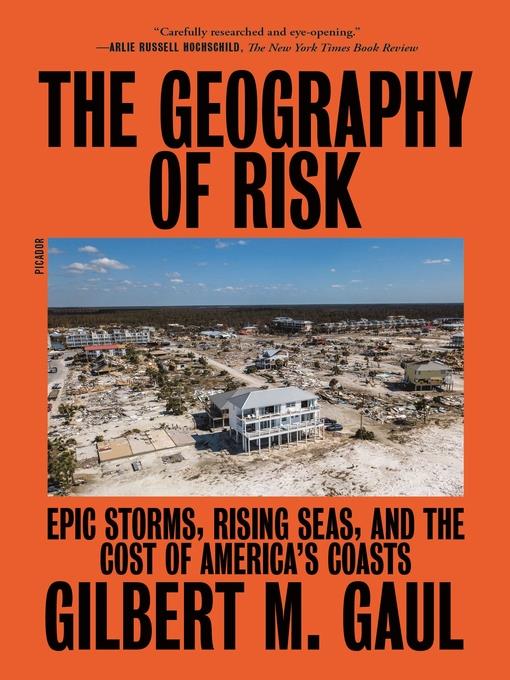
The Geography of Risk
Epic Storms, Rising Seas, and the Cost of America's Coasts
کتاب های مرتبط
- اطلاعات
- نقد و بررسی
- دیدگاه کاربران
نقد و بررسی

June 15, 2019
A Pulitzer Prize-winning journalist outlines an impending catastrophe as seawaters rise and homes, towns, and cities go under the waves. Gaul (Billion-Dollar Ball: A Journey Through the Big-Money Culture of College Football, 2015, etc.) opens with a depressing portrait: A Duke University coastal geologist named Orrin Pilkey sounds an alarm that the barrier islands of North Carolina are disappearing to rising ocean levels, decrying developers' "madness and hubris of unbelievable proportions"; for his troubles, his life work is trashed as "insulting, uninformed and radical" by the government of a beach town that's in line to drown. The back and forth is likely to continue even as nothing is done--and even if some $3 trillion of property is at risk of being destroyed in catastrophic storms such as the ones that visited the North Carolina coast in 2018. Municipalities seem unmoved, perhaps because so much of the money paid out for storm damage comes from the federal government--and, as Gaul notes, while the feds paid for just 5% of the damage half a century ago, it's now shelling out 70%. There has always been big money to be made in beach development, he writes. On the southern beaches of New Jersey, one entrepreneur turned a $50,000 land investment into millions, and a century later, that investment has appreciated 530-fold. In Florida, Henry Flagler, an associate of John D. Rockefeller, built tourist hotels in Daytona, Palm Beach, and Miami, launching a boom in visitation and setting a course for the state's modern development. The result, now, is hundreds of thousands of expensive structures that are just waiting to crumble--and, as Gaul notes, hurricanes are intensifying as "storms explode in size and power in a matter of days or even hours in the warmer, favorable conditions in the Atlantic and the Gulf of Mexico." Climate-change deniers will doubtless dismiss the waters lapping at their ankles, but coast dwellers will want to give this book their urgent attention.
COPYRIGHT(2019) Kirkus Reviews, ALL RIGHTS RESERVED.

Starred review from August 1, 2019
Pulitzer Prize-winning journalist Gaul (Billion-Dollar Ball) writes about the increasing cost of maintaining and rebuilding U.S. coastal cities after events such as hurricanes, tropical storms, or even heavier-than-normal rainstorms. Touching on places in Florida, Louisiana, and the Carolinas but using New Jersey as the paradigm, the author traces the rise of city development in some of the riskiest areas: barrier islands and other ocean-front arenas. Using an array of sources from governmental studies to newspaper accounts to expert interviews, Gaul follows how developers, local politicians, homeowners, and the federal government have created an unending and unsustainable cycle of rebuilding. With sea levels expected to rise even more over the coming decades, stronger storms an ever-increasing reality, and taxpayers footing more and more of the rebuilding costs, Gaul's work provides a sobering historical and present-day account on a seemingly never-ending cycle. VERDICT Thoughtfully written, minutely researched, and eminently readable, this sobering analysis seeks to make people start asking questions about the viability of building on the coasts in an era of climate change.--Laura Hiatt, Fort Collins, CO
Copyright 2019 Library Journal, LLC Used with permission.

























دیدگاه کاربران